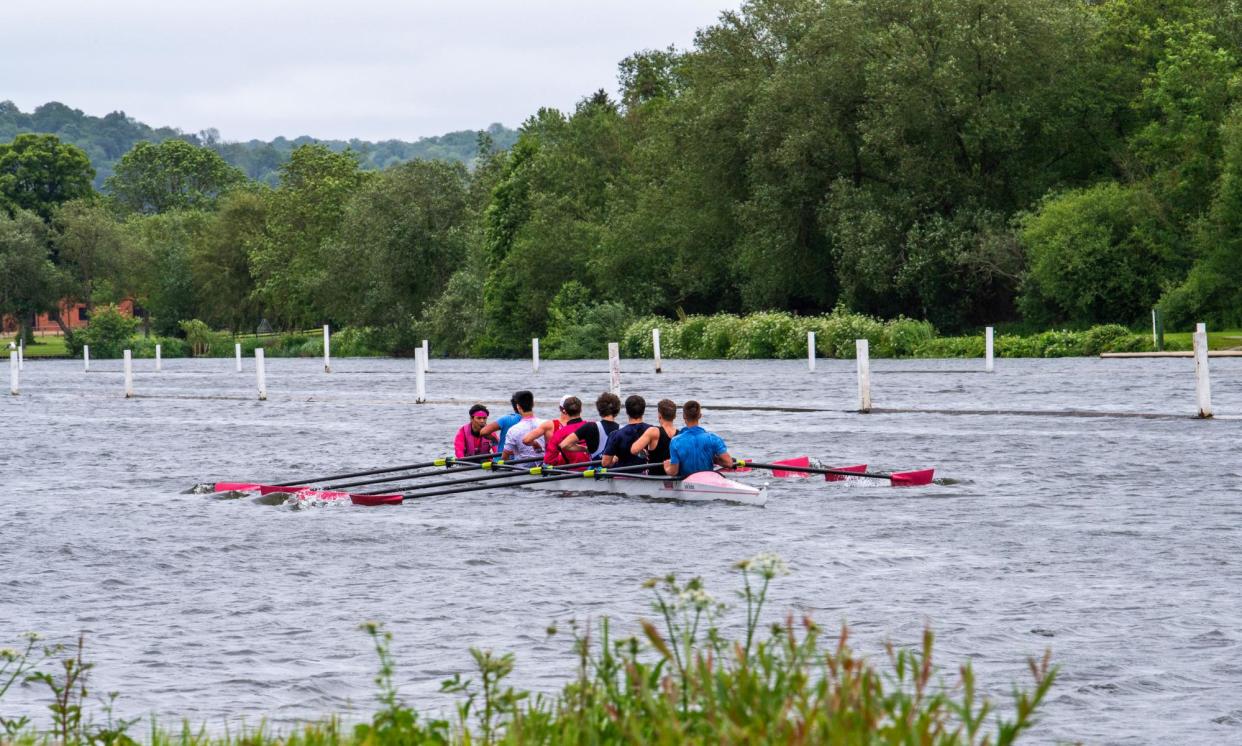High levels of E coli found at Henley days before international regatta

Harmful E coli bacteria have been found at very high levels at Henley, days before elite rowers compete in the international regatta there.
Water quality testing in the Henley Mile, part of the regatta course outside the Oxfordshire town, has revealed mean levels of 1,213 E coli colony forming units (CFU) per 100ml of water, across 27 tests. Where E coli levels are above 900 CFU/100ml, the water quality is deemed poor, according to bathing water designations, and is a threat to public health.
The highest reading recorded by campaigners from River Action reached 25,000 CFU/100ml, more than 27 times the acceptable limit for bathing water. The second highest reading was 8,001 CFU/100ml of water.
As a result of the testing, Henley Royal Regatta organisers are warning the 4,000 elite rowers to protect themselves from sickness and infection from the water. Rowers are being advised to cover cuts and to avoid swallowing splashes of river water.
As thousands of rowers prepare to compete at Henley from 2-7 July, Sir Steve Redgrave, a former Olympic rower and chair of the Henley Royal Regatta committee of management, said the findings were a reminder of the effect sewage pollution was having on UK rivers.
“Henley Royal Regatta supports the research undertaken by River Action, which highlights the essential work that needs to be done to improve the cleanliness of our waterways for all to enjoy,” Redgrave said. “Our rowers train daily all around the country. Our waterways are vitally important to our competitors racing, but also to all those athletes training on a daily basis nationwide.”
But Thames Water said it was not the cause of the increase in bacteria and accused River Action of being alarmist. The company said it had carried out its own testing since May at two different spots in the river and the results were “reassuring”.
It said its laboratory tests showed that apart from two days in May and two in June E coli levels were consistently at rates deemed good for bathing waters.
E coli and intestinal enterococci increases over two days in May and two days in June were nothing to do with its outflows, the company said, and blamed industrial and road runoff and parasites from livestock and birds.
In a tense showdown between the company and campaigners, Dave Wallace, who carried out the River Action testing in Henley, said Thames Water had taken its measurements in a different area of the river.
Wallace used a Fluidion World Health Organization-verified E coli analyser – a handheld microbiological laboratory – for his testing and the work was overseen by the NGO Earthwatch. The equipment provides results in hours, rather than involving the delays of static lab-based testing.
“We have been testing the river in an area of the highest recreational use on the Henley Mile, as it is on the regatta course,” said Wallace. “We also know that the outflow of the Henley sewage treatment works impacts this area, so we were surprised that Thames Water had decided to test at the two locks, which are long distances from the regatta course, hence low usage and lower sewage impact.”
River Action testing on the Henley Mile at Fawley Meadows began on 28 May and will run until 7 July. Between 28 May and 25 June, 47% of readings were above 900 CFU/100ml.
James Wallace, the chief executive of River Action said: “It is shocking that we have had to issue health advice to the competitors of the Henley Royal Regatta. Thank goodness the organisers are showing a duty of care to the rowers by issuing guidance that will help to keep competitors safe.”


